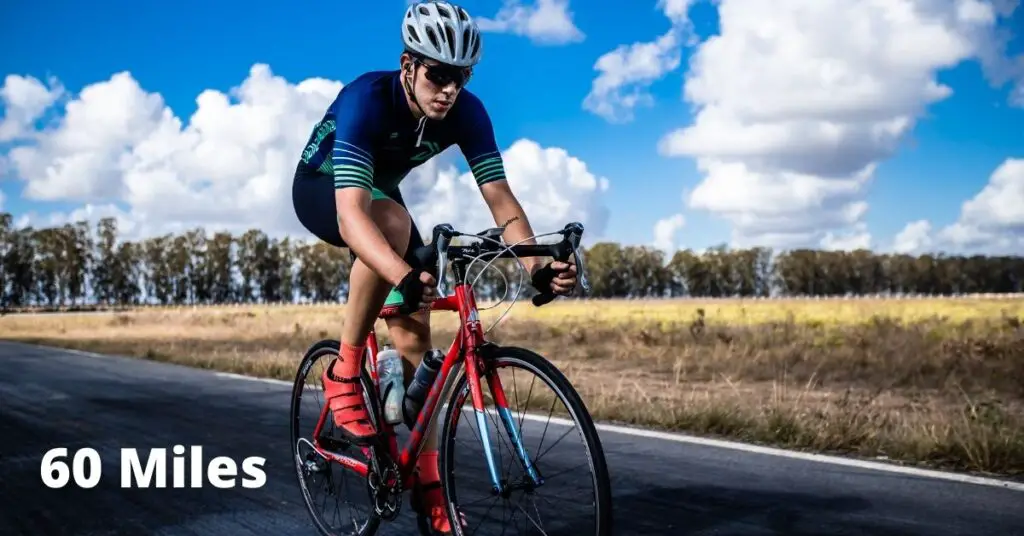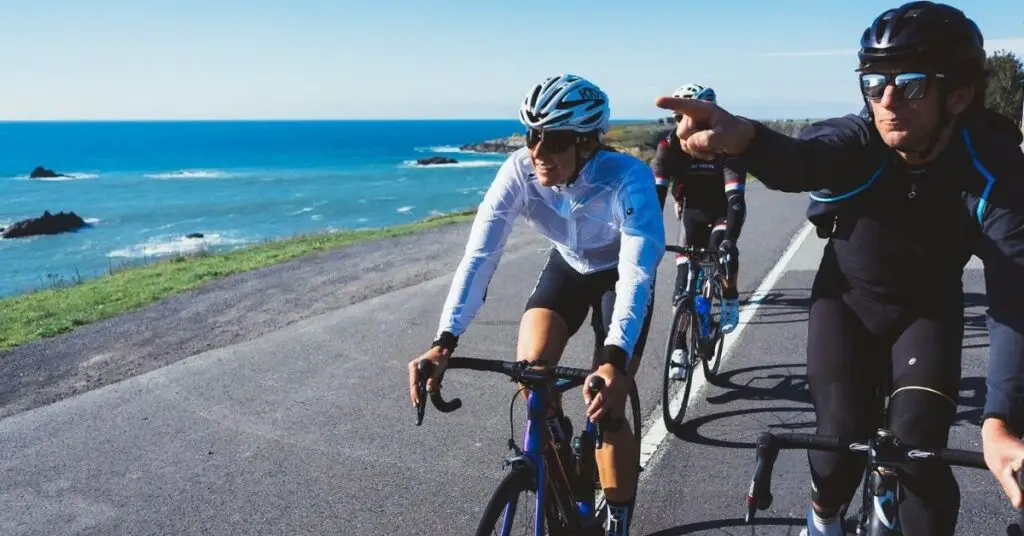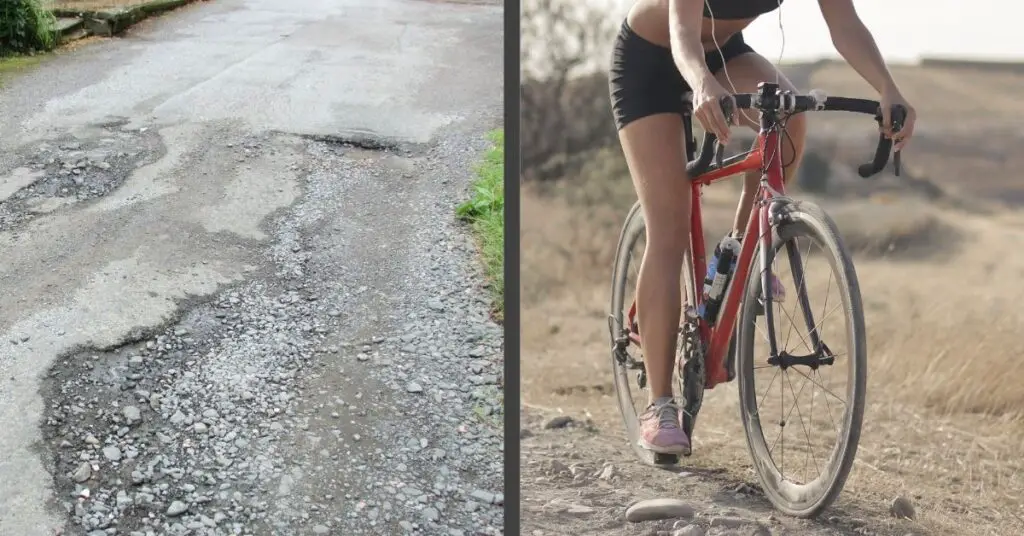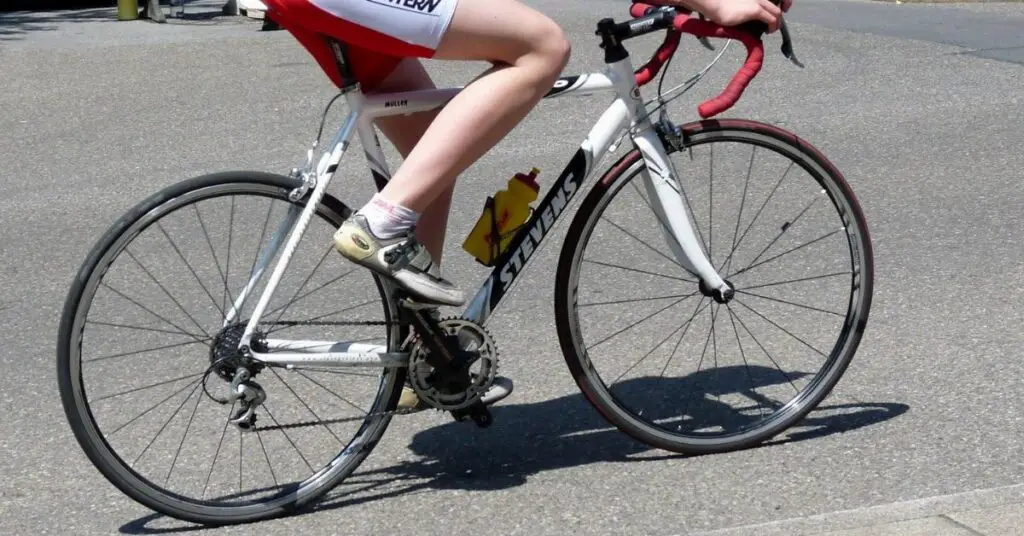The definition of “Long” (when it comes to bike rides) is based on the individual view of what is long enough. For one cyclist, 20 miles can be long but for another 60 miles might not be.
However, on average, a 60 miles ride can be classified to be a long-distance bike ride.
This is not to dispute that it might be a short distance ride for you because everyone has their own opinion.
The classification of cycling sessions in diverse categories is based on how much time that it took, the length of preparation that is required, and the amount of energy spent.

Is 60 Miles A Long Bike Ride?
What Is Consider A Long Distance Ride In The Bikers’ World?
Generally, people consider anything over 50-60 miles a day as Long Distance. But this will change from person to person. For more experienced riders, crossing the 100-mile mark is not a big deal in 24 hours. This is known as a “Century” in the cycling world.
Some highly experienced bikers may also get to 200-300 miles in a 24-hour window but that is a rarety. It is called a “Double Century” (200 Miles ) or a “Triple Century” (300 Miles).
Anything above the 100 miles per day mark is considered to be Ultra distance cycling.
For Beginners
I might consider walking few blocks away from home a long-distance journey when you might consider walking a mile a stroke. The word ‘long distance’ differs in meaning from one person to the other.
Bringing this to cycling too differs, if you are in a conversation with different cyclists about which distance they consider long, you’ll realize that the answer would differ.
A cyclist might consider a 30 miles ride a long ride while another might not consider 70 miles a long ride. Why? That’s because they have different levels of experience, consistency, passion, and strength.
To speak in general terms, however, Whatever ride that saddles you on your bike for 4 to 5 hours is quite long. Candidly, riding for 5 hours in only one session is quite a work considering the time and energy that would-be consumed to hold on for that long regardless of how physically stable you are.
How Long Does it Take to Travel 60 Miles on a Bike?
The answer to this relies solely on your average speed which can be enabled or catalyzed by several factors, to mention a few; strength, experience, bike type, road, and age.
Some cyclists travel 10mph for 6 hours, 15mph for 4 hours, and 20mph for 3 hours. This is relatively different for different people because of the variation in age, shape, strength, and experience.
The More the Breaks, the Longer it Takes!
Due to stress or strain, some people might take constant breaks along the way, some might be up to 15 minutes for every stop. Of course, it adds to the time that it takes to arrive at the arrival point.
Someone riding 60 miles at age 25 is expected to be faster and smarter than a 45 years old man.
Studying each of the cases and determining the category that you fall in would help you get to the answer real quick.
The Need for Breaks & Steady Pace
Cycling for long hours sometimes might be seen as a moment of fun where several stops might be required. Most times, it isn’t fun if you ride alone. It can be tiring and exhausting.
Cycling in groups might necessitate some stops, most times it’s a restaurant or cafe to grab some lunch, relax, snap pictures, or record video. A little break to relax the mind and body. This can only occur when cycling is not with very high intensity.
Take for instance, a journey of 80 miles might be broken into 4 quarters, stopping every 20 miles. 20 miles can be rounded every hour depending on your companions.
Maintaining a steady pace might be relatively difficult if you are pushing too hard. The most important thing is that your pace is progressively steady. It is not the best to cycle 25 miles in an hour and drop to 15 miles in the next.
4 Difficulties Often Experienced During A Long Bike Ride
These are some issues that arise with cyclists…….
1- Cycling involves pedaling in the same position for a long time your thighs keep going in cycles, your pelvic girdle keeps rotating until it becomes almost numb. This is very challenging, yes, cycling for long would make your legs seem weak.
2- Being stuck in the same position for long without changing it can feel miserable and monotonous.
3- Cycling is a sport that subjects the body to uncomfortable postures which result in aches around the neck region and back region.
4- When riding out in the summer sun, you’ll feel extreme heat reflecting from the road. Many cyclists feel a burning sensation due to this heat. Lighter outfits help in overcoming this problem. Also taking shoes off at intervals help relax the feet.
Stopping cycling because of these isn’t the right option because cycling is also a sport that helps you keep fit and retain freshness. To experience a more comfortable cycling journey, you must ensure that you take all of the precautions that would help you prepare for a long ride.
How To Prepare For A Long Distance Ride?
A long-distance bike ride cannot be compared to an early morning ride down the street or a ride to your work. Riding long distances requires a high level of dedication and sport intensity to make it happen. Most times, it’s not something that you find fun-filled.
If you are riding for exercising sake, you might not need all ‘Must-knows’, however, if your preparation is towards a race you’ll have to stretch your tolerance a little bit. Seeing that you would be competing with people of different experiences, training, and dedication, you’ll need to go beyond all limits when preparing.
1- Be Well Nourished
The word ‘nourish’ goes beyond food alone. This involves the intake of regular food, fruits, and drinks that would be beneficial to you. Having good food and drink is one way to stay healthy and strong.
Cycling for long requires a reasonable amount of strength and agility which can be obtained from nutritious food. There is a need to replenish the system with Carbohydrates and electrolytes.
Good food has been scientifically proven to be able to provide humans with the necessary vitamins and minerals that repair worn-out tissues which are needed for strength.
Additionally, cycling with companions might give room for stopping by a restaurant to grab lunch or snack but competitions are not like that. Hydration is essential during a long ride, you might be allowed to drink a bottle of water every hour.
As good as the food is, don’t ever eat a meal that your body isn’t accustomed to on a race day. Race days aren’t times to try out new dishes, it might be bad for your stomach and do more harm than good. Trying a new meal on your race day might lead to an allergic crisis.
This guide on Cycling Nutrition suggests 2 bottles of low-carb, electrolyte hydration drinks, 30-60g of carbs per hour. Eating more solids right at the beginning of the event is a good strategy.
2- Aim for Gradual Stamina Improvement
As an amateur rider who is looking at improving, you would break if you push yourself too hard. Yes, it is very important that your pace increases progressively, however, do not override your stamina. Look towards gradual improvement.
If you cycle 3 hours in a day before now, you can add 30 more minutes to it, before you know it, you’ll gradually transcend to the next level. With strong will and determination, you’ll begin to ride long distances.
3- Get Equipped!
You don’t want to get on your bike only to realize that you are on a wild goose chase.
Before setting out, check to see that you are equipped with everything that you’ll be needing for the ride and ensure that all those things are in perfect condition.
Also, Discovering every problem with your bike before setting out is an excellent practice, that would give you ample time to fix it before the ride.
Do a cross-examination, check your tires, check the chains and brake pads to discover all faults. Carry your bike kit on your ride as well. Imagine yourself stranded in the middle of nowhere with a bike that’s faulty. Just in case you missed something, the kit would help you fix any problem that might crop up.
Don’t hit the road without wearing your helmet and proper clothing.
Here is a quick checklist…..
| 1- Spare innertube 2- Tire levers 3- Multitool 4- Self-sealing patch 5- Pump 6- Chain ‘quick link’ 7- A few cable ties 8- Snacks such as energy gels/bars, bananas. 9- Water bottle 10- Cash/Card 11- Sunscreen 12- Mobile phone (In waterproof bag) 13- GPS cycle computer |
4- Exercise Regularly
Visiting the gym is next to success for a cyclist. Our bodies are flexible to change and at the same time might be rigid to sports if we don’t work on them.
To your exercise routine, including spinning. Constantly change your workout routine to help your joint and muscles in all angles.
5- Be Consistent & Mindful of Your Body
Finally, while it is important to gather encouraging and impressive milestones as a cyclist, it is also important that you are mindful of your long-term health. Push yourself, but progressively improve. Pushing yourself too hard (beyond your capacity) only breaks you.
The essential ingredient of growth is consistency. Listen to your body more than your mind. Your mind pushes you to take leaps that you ordinarily wouldn’t have taken, which is great, however, your body might be sending you signals about your body’s need for rest. So you must listen to your body and remain in balance and full control of your mind.
Final Thoughts!
60 Miles is a common distance that many cyclists go for. In general terms, it can be considered Long distance, but not Ultra Long distance.
A biker’s experience, stamina, age, and a few other factors play a role when he decides what’s long distance for him.
I suggest trying out your first 60-mile bike ride and see for yourself. But do take the time to make necessary preparations!
Cheers!




